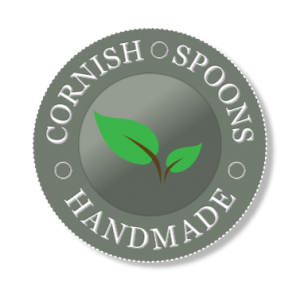 A Short History of Wooden Spoons
A Short History of Wooden Spoons
You cannot make a spoon that is better than a spoon…
Umberto Eco

A brief history of wooden spoons.
They’re practical. They have a rich cultural history and they can last forever.
![]()
Wooden spoons have been made in virtually every nation on earth and reflect the life of ordinary folk.
Their recorded history seems to begin in Ancient Egypt more than a thousand years before the birth of Christ (10,000-500 BC). A wooden cosmetic-spoon in the collection of the British Museum, has a handle is in the form of a dog biting the tail of the fish that forms the bowl and the lid, with blue painted detail. The paint used is similar in composition to Milk Paint, a non-toxic and food-safe water-based paint made from milk and lime with pigments added for colour, still used today.
Since the moment of its invention, the wooden spoon has been integral to an impressive variety of cultural traditions and across the world wooden spoons were the most common household utensils.
The Vikings were celebrated spoon carvers and examples of decorated spoons have been found as far apart as Birka, west of Stockholm, across Scandinavia and to the UK city of York. Their decorated spoons used a technique called kolrosing where a pattern is incised in the spoon with a knife. Traditionally, charcoal or coal dust was then rubbed into the lines to accentuate the pattern.
The earliest mentioning of spoons in England comes from 1259, as a part of wardrobe accounts of King Edward I (1239 – 1307). First recorded in the Royal Collection in 1349, the spoon is described as of ‘antique forme’ and stylistically seems to relate to the twelfth century. It was possibly supplied to Edward’s forebears Henry II or Richard I.

Workers painting wooden spoons. Semyonov, Russia, 1896

The Mary Rose, wrecked 19 July 1545
In Medieval Europe, wooden spoons started to be replaced with more durable metal variants in the 15th century, though available merely for those with deep pockets. Spoons were used not only as a means of eating but as a mark of wealth and power.
Six small spoons were recovered from the wreck of the Mary Rose, the warship of the English Tudor navy of King Henry VIII wrecked in the Solent in 1545; three pewter and three wooden. The pewter spoons belonged to officers and their high tin/low lead content suggests they were made in England. The wooden spoons were made of Maple, and were used by the ordinary crew.
During the 17th century, funeral spoons became fashionable; spoons that were made for presentation to members of the deceased’s family as a memento-mori object, designed to remind the living that life is all too brief.
Iranian paintings from the early to mid-nineteenth century feature finely carved spoons placed delicately along the edges of large porcelain bowls. The spoon were carved from lime or pear wood specifically for the use of dignitary or elite members of society during banquets or special ceremonies. The porcelain bowls contained sherbet and these spoons were used communally amongst guests, often with several guests drinking from the same spoon.

Funeral Spoon – Cornish Spoons 2022
